This section only briefly describes the malfunctions of the injection system caused by the failure of certain sensors. The procedure for removing and installing components of power supply and engine control systems is given in subsections «Engine power system» And «Engine management system».
The feedback injection system has an exhaust gas catalytic converter and an oxygen concentration sensor in the exhaust gases (two converters and four oxygen concentration sensors are installed parallel to each other on a Ford Focus II car), which provides feedback. The sensors monitor the concentration of oxygen in the exhaust gases, and the electronic control unit, according to their signals, maintains such an air-fuel ratio at which the converters work most efficiently. Moreover, the main control sensors are sensors installed on the collector, and the sensors installed at the output of the converters are diagnostic, they determine the quality of the entire engine control system as a whole. If the engine control unit, based on the information from the diagnostic sensors, detects an excess of oxygen concentration in the exhaust gases, which cannot be eliminated by calibrating the system based on the signals from the control sensors and which means some kind of system malfunction, it will turn on the engine control system malfunction warning lamp in the instrument cluster and enter into the memory an error code for subsequent diagnosis.
WARNING: Before removing any components of the fuel injection system, disconnect the wire from the terminal «minus» battery.
WARNING: Disconnect the battery only when the ignition is off.
WARNING: Do not start the engine if the cable lugs on the battery are loose.
WARNING: Never disconnect the battery from the vehicle's electrical system while the engine is running.
WARNING: When charging, disconnect the battery from the car's on-board network, as increased current during charging can damage electronic components.
WARNING: Avoid heating the electronic control box (ECU) above 65°C in working condition and above 80°C in non-working condition (e.g. in a drying chamber). It is necessary to remove the computer from the car if this temperature is exceeded.
WARNING: Do not disconnect or connect wiring harness connectors to the ECU while the ignition is on.
WARNING: Disconnect the wires from the battery and the wire connectors from the ECU before arc welding on the vehicle.
WARNING: Make all voltage measurements with a digital voltmeter with an internal resistance of at least 10 MΩ.
WARNING: The electronic components used in the injection system are designed for very low voltage and can easily be damaged by electrostatic discharge. To prevent damage to the ECU by electrostatic discharge:
WARNING: - do not touch the computer plugs or electronic components on its boards with your hands;
WARNING: – when working with programmable read-only memory (PROM) control unit, do not touch the microcircuit pins.
WARNING: It is not allowed to run an engine with a catalytic converter on leaded gasoline - this will lead to a quick failure of the catalytic converter and the oxygen concentration sensor.
WARNING: When operating in rainy weather, do not allow water to come into contact with the electronic components of the fuel injection system.
Check the injection system in the following order.
1. Check the connection with «weight» engine and battery.
2. Check the fuel pump and its fuel filter.
3. Check the fuses and relays for switching on the elements of the injection system.
4. Check up reliability of contacts in blocks with wires of elements of system of injection.
5. Check the sensors of the injection system.
The vast majority of fuel injection system malfunctions are caused by the failure of the following sensors:
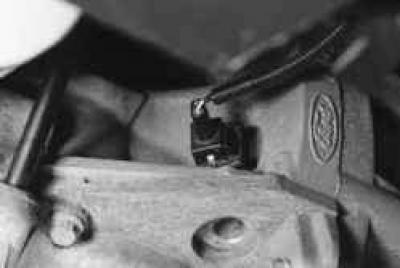
- crankshaft position sensor - complete failure of the injection system, the engine does not start;
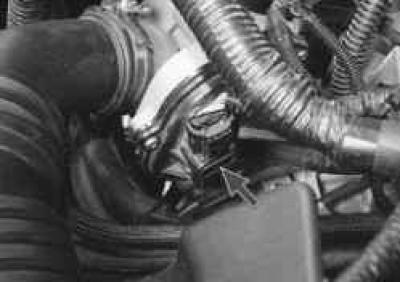
- throttle position sensor (installed in the throttle body cover) - loss of power, jerks and dips during acceleration, unstable operation in idling mode;
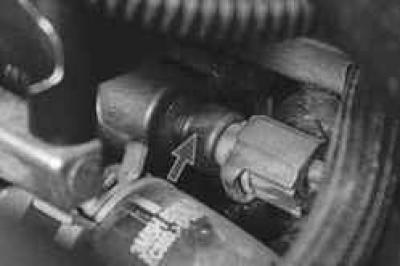
- coolant temperature sensor - difficulties with starting in cold weather, as you have to warm up the engine, maintaining the speed with the accelerator pedal, when overheated, power is significantly reduced, detonation appears;
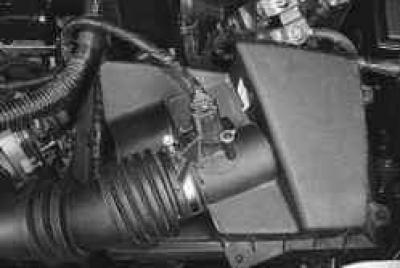
- a combined mass flow and intake air temperature sensor - if the temperature measurement function fails, an increase in fuel consumption, an increase in the level of exhaust gas toxicity, and if the flow measurement function fails, an increase in fuel consumption, a significant deterioration in dynamics, problems with starting the engine;

- solenoid valve of the variable valve timing system - in case of valve failure, a significant deterioration in dynamics and «swimming» crankshaft speed in idle mode up to a complete stop of the engine;
NOTE: The engine shown has two solenoid valves, one each for the intake and exhaust camshafts.

- knock sensor (two sensors are installed on the left side of the cylinder block in the area between the 1st and 2nd..
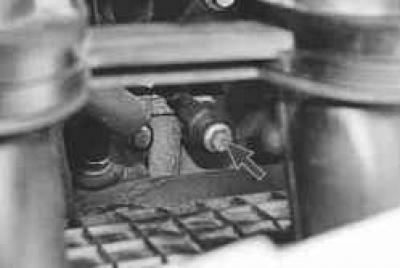
...and also between the 3rd and 4th cylinders) - the engine is very sensitive to the quality of gasoline, increased tendency to detonation;
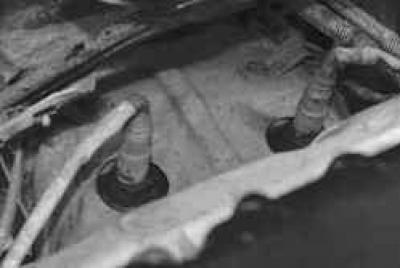
– sensor of concentration of oxygen in the fulfilled gases (Lambda probe) – Increased fuel consumption, reduced engine power, unstable idling. Possible damage to the catalytic converter of exhaust gases;
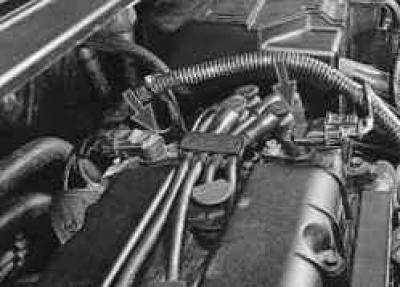
- phase sensor - power reduction, increase in fuel consumption;
NOTE: The engine shown has two phase sensors, one each for the intake and exhaust camshafts.
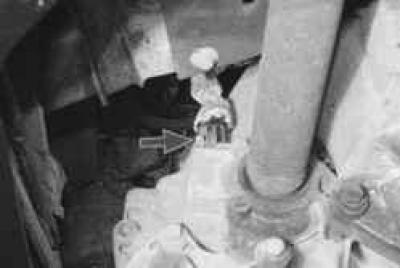
- speed sensor (mounted on the gearbox housing) – deterioration of dynamic qualities of the car and increase in fuel consumption is possible.
Visitor comments